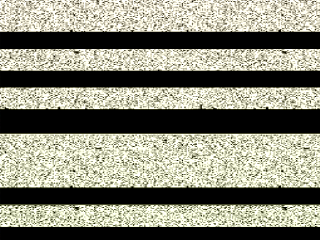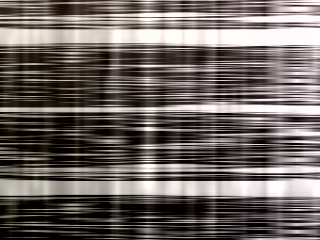Max Wolfram is an ongoing exploration of audio/visual time-based aesthetics and narratives. It is tightly linked to possibility of sharing of knowledge, software and creativity. A kind of generative approach is taken towards formation of moving images: simple algorithms, whose slightly randomized parameters are controlled live, are creating video packets from cellular automata functions available in PDP. The stream is manipulated and fed into histogram analyzer (which is used as a waveform generator) and scanned synthesis, which both produce audio that is fully linked to the video.
Max Mathews was one of the three scientists who in 1999 came up with scanned synthesis method of creating sound from movements of a dancer on camera. He was also one of the first who synthesized first computer music. His work in MUSIC language is still present today in the CSound. Free availability of knowledge (without restrictive patents) has led to further development in the field of computer music. In the 80's Stephen Wolfram investigated simple rules for so-called elementary cellular automata. The unexpected complexity of the behavior of these simple rules led Wolfram to suspect that complexity in nature may be due to similar mechanisms. Wolfram's actions and ideas in scientific community also point to certain controversies and suppression of knowledge. In light of copyright/patents vs. free flow of knowledge and inventions Miller Puckette's story of writing the same program twice (Max + Pure Data) can be an interesting point of departure too.
Aesthetically, Max Wolfram performance draws from an idea of taking visual abstraction as figurative technique. Glimpses of movements, zooms and pans of grups of pixels that quickly dissolve into motion blur, phase distortion or extreme pixel stretching, create an illusion of content, life forms and stories that are soon lost in digital video noise debris. Time-based, it also explores the audio-visual beats and rhythms generatively created in the chaos of many random number generators, its controls and using simple video loop samplers, most of the time keeping the manipulation on the video level.









